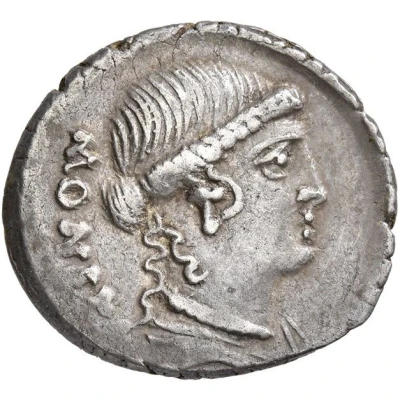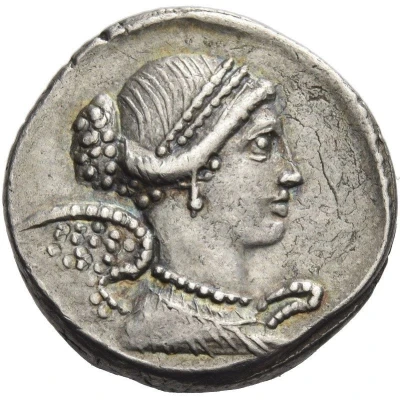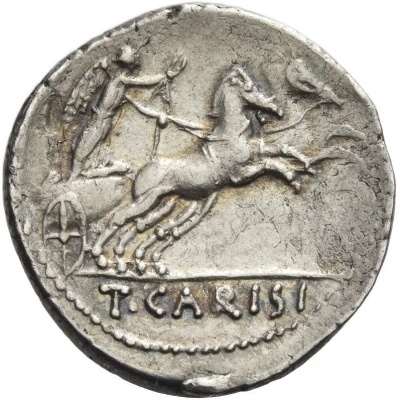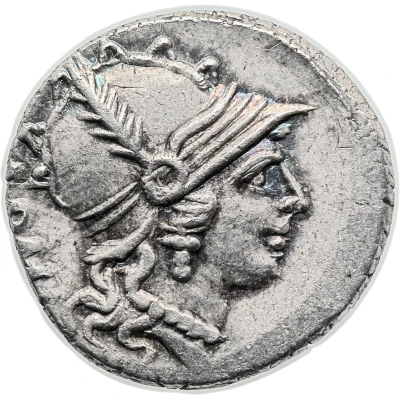
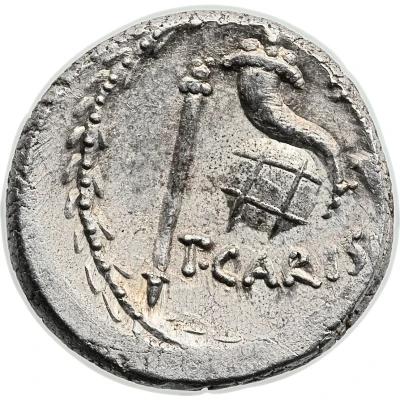

© Heritage Auctions
Denarius Carisia: Titus Carisius; ROMA / T•CARISI 46 BC
46 BC year| Silver | 4.06 g | 17 mm |
| Issuer | Rome › Roman Republic (509 BC - 27 BC) |
|---|---|
| Period | Republic (509 BC - 27 BC) |
| Type | Standard circulation coin |
| Year | 46 BC |
| Value | Denarius (1) |
| Currency | Denarius of 16 Asses (141 – 27 BC) |
| Composition | Silver |
| Weight | 4.06 g |
| Diameter | 17 mm |
| Shape | Round (irregular) |
| Technique | Hammered |
| Orientation | Variable alignment ↺ |
| Demonetized | Yes |
| Updated | 2024-10-06 |
| Numista | N#66718 |
|---|---|
| Rarity index | 93% |
Reverse
Cornucopiae on globe between sceptre at left and rudder at right; below, moneyer mark; all within laurel-wreath.
Script: Latin
Lettering: T•CARISI
Translation: Titus Carisius
Edge
Plain
Comment
The gens Carisia was a Roman family during the latter half of the first century BC. The most famous member of the gens was Titus Carisius, who defeated the Astures in Hispania circa 25 BC; but in consequence of his cruelty and insolence, the Astures took up arms again in 22 BC.Interesting fact
The Denarius coin was used as a means of payment for Roman soldiers during the Roman Republic. It was equivalent to 10 asses, which was the standard unit of measurement for currency at the time. The coin was also used to pay taxes and was widely accepted in trade throughout the Roman Empire. Its design featured the image of a god or goddess on one side and the Roman Republic's official emblem on the other. I hope that helps! Let me know if you have any other questions.
